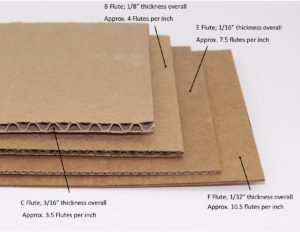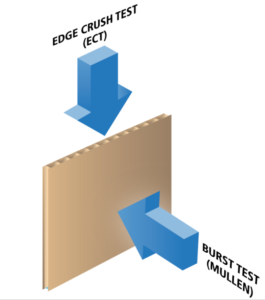Answers to Your Corrugated E-Commerce Shipping FAQs
What is the best corrugated board grade and flute for my DTC shipping box?
We receive many phone and web inquiries about e-commerce shipping boxes:
- Is E-flute too thin for a shipping box?
- What is the difference between 32ECT and 200#?
- What is Mullen? Can I use C-flute for extra strength?
- Does my board choice impact the print quality?
It is exhausting to compare all the possible board and ink options. All the potential combinations are overwhelming. The more time you spend on the web reading, the worse it gets because much of what you find is not real-world or specific application-focused. The right answer is one that is very specific to what is best for YOUR project, not for a theoretical application that has no relevance to what you need.
 Relax. There are not as many viable corrugated board options as you may think.
Relax. There are not as many viable corrugated board options as you may think.
Very frequently, it is not a matter of what you want but what is available and best for your specific needs. One of the greatest concerns is the thickness of the board and that is primarily determined by the fluting. That is the thickness of the middle, wavy layer which is sandwiched in between the outer and inner liner sheets as shown in the attached graphics
You can read about a dozen different corrugated board flutes but over 85% of all the millions of shipping boxes we produce each year are made in E-flute. Less than 10% of the boxes we manufacture are made in B-flute. That’s all, except for an occasional C-flute or double wall application, which are very rarely used for e-commerce applications. This is really all you need to know about board options for the vast majority of all DTC box applications.
Understanding Mullen versus ECT
 The way it was explained to me over forty years ago is that the original way to test corrugated strength was the Mullen or burst strength test. Essentially that measures how much (in/out or out/in) pressure a corrugated container can take before the board punctures or bursts. When boxes started shipping more by truck than by rail, stacking became much more important which is when the ECT (Edge Crush Test) was developed. This was a whole new way of looking at board focused on up/down (stacking) strength rather than puncture resistance.
The way it was explained to me over forty years ago is that the original way to test corrugated strength was the Mullen or burst strength test. Essentially that measures how much (in/out or out/in) pressure a corrugated container can take before the board punctures or bursts. When boxes started shipping more by truck than by rail, stacking became much more important which is when the ECT (Edge Crush Test) was developed. This was a whole new way of looking at board focused on up/down (stacking) strength rather than puncture resistance.
Industry wide, the most used board grade is 32ECT and it satisfies most applications. Our favorite board grade is 200# test, not because of puncture resistance, but because it features better/thicker paper on the inside and/or outside liners. Guess what? That also gives us a better printing surface which is important considering the high-quality graphics our customers expect from us. BTW, in rare situations we may even upgrade the medium, middle layer of board but remember, unusual board combinations MAY have higher minimums.
Corrugated board questions are welcome!
As always, our branded packaging advisors are eager to answer any questions you may have about structural design, corrugated board construction, printing requirements on YOUR application and requirements. This post is kind of a snapshot or overview, but we can get as technical and as in depth as you require.
Call us at 630-551-1700 or contact us at www.SalazarPackaging.com
Related posts:
https://www.salazarpackaging.com/faq-dtc-internal-packaging-for-shipping-boxes/
https://www.salazarpackaging.com/salazar-packaging-in-the-news-ta-da-box-application/



